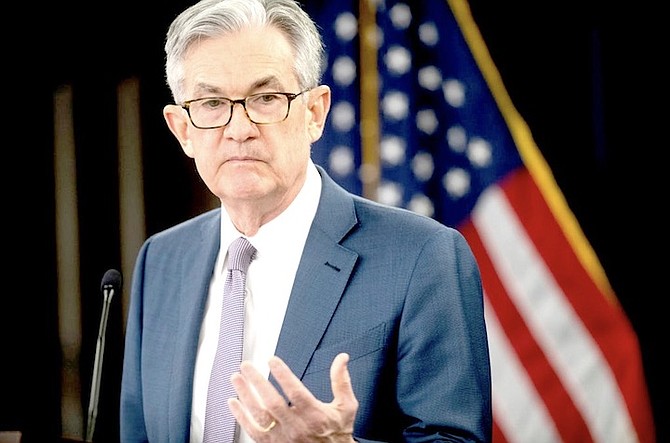ACTIVTRADES WEEKLY
By RICARDO EVANGELISTA
www.activtrades.bs
ON Wednesday June 16 the United States Federal Reserve stunned observers, announcing the intention to start rising interest rates at some point in 2023, bringing the dot plot forward by a full year.
Prior to June 16, central bank officials’ spent months dismissing inflationary fears, insisting spikes in consumer prices were to be expected in a post-lockdown scenario of booming economic activity, highlighting the transitory nature of the phenomena and insisting on the importance of maintaining monetary stimulus in place, in order to support the economic recovery.
So, the announcement took the financial markets by surprise, with investors - who had bought heavily into growth stocks - left fearing the end of the reflationary trade cycle.
After 14 months of growth, the sudden change in investors’ sentiment triggered an increase in market volatility, as many panicked and tried to close positions, causing losses of several percentage points in major stock indices around the world, with risk aversion suddenly taking over. Meanwhile, the US dollar index, which measures the performance of the greenback versus a basket of six other major currencies, gained more than one percent within a few hours of the announcement. This dollar rally continued over the days that followed, climbing another full percentage point before the markets closed for the week on Friday.
However, despite the shock to outsiders, the timing of this announcement appears to have been carefully plotted, with the aim of minimising the potential negative impact over the financial markets; no less than 11 public appearances by Fed officials were scheduled for the week that followed the pivot, including the chairman’s testimony to congress.
Several Fed policy makers have since used public appearances to insist that although they are now thinking about considering raising rates, such move is still over the horizon, dismissing the idea of pre-emptive action being taken in order to contain potential inflationary risks, committing to only act should those risks materialise.
The Federal Reserve did what it would have to do at some point: Start the conversation on bringing forward the timing of the tapering, as it is undeniable that inflationary risks are growing, with the price of housing and commodities, such as oil, contributing significantly to exacerbate rising core prices.
Central banks have two ways to influence the behaviour of economic agents: Do something, ie actually increasing interest rates; or, talk about doing it. June 16 offered a classic example of the latter. Faced with the dilemma of needing to tighten policies to contain the threat of inflation, a move that entails the risk of damaging the economic recovery and wreaking havoc in the financial markets, the Fed gave the world a nudge, a sign of readiness, without actually doing anything.
Since June 16, market volatility fizzled out and stock indexes reached new all-time highs. It may still be too soon for a final analysis of this episode, but early evidence points at a master class in central bank communication by the Federal Reserve.






Comments
Use the comment form below to begin a discussion about this content.
Sign in to comment
Or login with:
OpenID